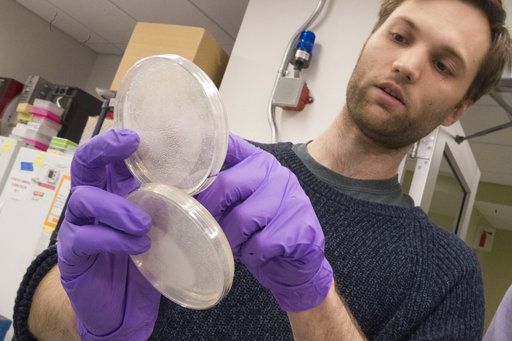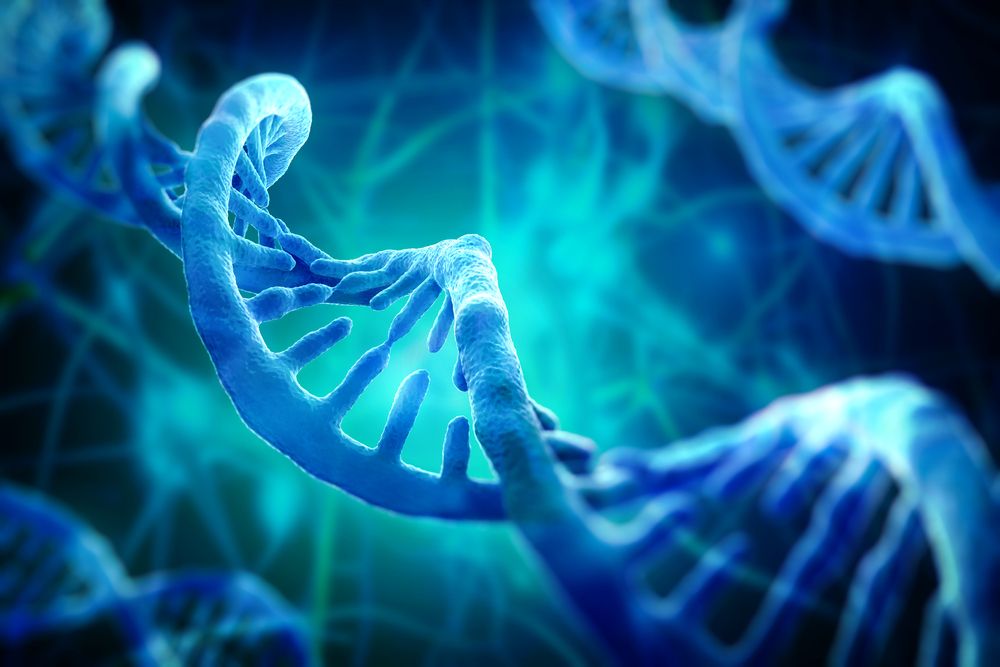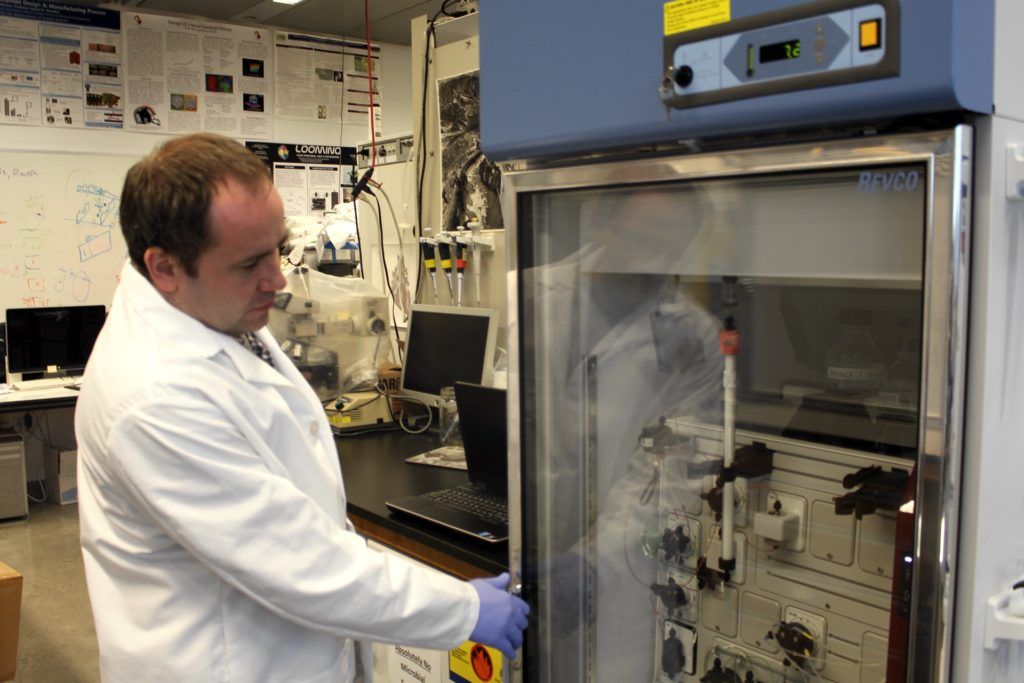Helix will sequence your genes for $80 and lure app developers to sell you access to different parts of it.


DARPA’s Safe Genes program plans to invest $65 million in seven teams that will collect data and develop gene editing tools to support bio-innovation and combat bio-threats such as invasive species.

At Jef Boeke’s lab, you can whiff an odor that seems out of place, as if they were baking bread here.
But he and his colleagues are cooking up something else altogether: yeast that works with chunks of man-made DNA.
Scientists have long been able to make specific changes in the DNA code. Now, they’re taking the more radical step of starting over, and building redesigned life forms from scratch. Boeke, a researcher at New York University, directs an international team of 11 labs on four continents working to “rewrite” the yeast genome, following a detailed plan they published in March.


Gene editing aims to make precise changes to the target DNA whilst avoiding altering other parts of the DNA. The objective of this is to remove undesirable genetic traits and introduce desirable changes in both plants and animals. For example, it could be used to make crops more drought resistant, prevent or cure inherited genetic disorders or even treat age-related diseases.
As some of you may recall, back in May a study was published which claimed that the groundbreaking gene editing technique CRISPR caused thousands of off target and potentially dangerous mutations[1]. The authors of the paper called for regulators to investigate the safety of the technique, a move that could potentially set back research years if not decades.
This publication has been widely blasted by the research community due to serious questions about the study design being raised. One of the problems with this original paper was that it involved only three mice, this is an extremely poor number to make the kind of conclusions the paper did. There have been calls for the paper to be withdrawn and critical responses to the study.

When British billionaire Jim Mellon wants to map out an investment strategy, he likes to write a book first. Out of that process came his most recent work — Juvenescence: Investing in the Age of Longevity. Now he and some close associates with some of the best connections in biotech are using the book as inspiration to launch a new company — also named Juvenescence — with plans to make a big splash in anti-aging research.

The immune system plays a key role in tissue regeneration and the various types of immune cells such as macrophages, can help or hinder that repair process.
Inflammation is part of the immune response but with aging that immune response becomes deregulated and the inflammation becomes excessive. Excessive levels of inflammation generally speaking inhibit tissue regeneration and when that inflammation is continual, as it often is in aging, this leads to a breakdown in the ability to heal injuries.
As well as a deregulated and dysfunctional immune system aging also sees rising numbers of senescent cells accumulate which also cause inflammation. The immune system fails as we age and stops clearing away these cells leading to a downward spiral of inflammation and increasingly poor tissue repair.


Cory Doctorow has made several careers out of thinking about the future, as a journalist and co-editor of Boing Boing, an activist with strong ties to the Creative Commons movement and the right-to-privacy movement, and an author of novels that largely revolve around the ways changing technology changes society. From his debut novel, Down And Out In The Magic Kingdom (about rival groups of Walt Disney World designers in a post-scarcity society where social currency determines personal value), to his most acclaimed, Little Brother (about a teenage gamer fighting the Department of Homeland Security), his books tend to be high-tech and high-concept, but more about how people interface with technologies that feel just a few years into the future.
But they also tend to address current social issues head-on. Doctorow’s latest novel, Walkaway, is largely about people who respond to the financial disparity between the ultra-rich and the 99 percent by walking away and building their own networked micro-societies in abandoned areas. Frightened of losing control over society, the 1 percent wages full-on war against the “walkaways,” especially after they develop a process that can digitize individual human brains, essentially uploading them to machines and making them immortal. When I talked to Doctorow about the book and the technology behind it, we started with how feasible any of this might be someday, but wound up getting deep into the questions of how to change society, whether people are fundamentally good, and the balance between fighting a surveillance state and streaming everything to protect ourselves from government overreach.

Join us Live on 28th July on our Facebook Page and lets talk some science. Dr. Oliver Medvedik hosts our monthly Journal Club and this time we are talking about a new protein destroying missle system that could target undruggable diseases developed at Dundee University, UK.
Journal Club is a monthly live event and runs thanks to the support of our patrons. You can become a patron here: https://www.lifespan.io/campaigns/join-us-become-a-lifespan-hero/
We are holding our third Journal Club live stream event on July 28th at 13:00 EST/18:00 UK. Dr. Oliver Medvedik live from Cooper Union NYC and the Ocean level Patrons will be discussing a recent research paper with the opportunity for viewers to join the chat, comment and ask questions.
The paper we will be discussing is the recent AdPROM study where researchers from Dundee University, UK, created a missile system capable of targeting and destroying proteins within the cell, this opens up the door for treating undruggable diseases and tackling some of the aging processes. We discuss the research here in an article.
Fulcher, L. J., Hutchinson, L. D., Macartney, T. J., Turnbull, C., & Sapkota, G. P. (2017). Targeting endogenous proteins for degradation through the affinity-directed protein missile system. Open Biology, 7, 170066.